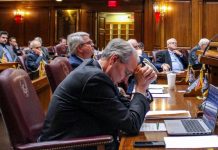Marilyn Odendahl for www.theindianalawyer.com
The owner of a piece of southern Indiana property who could not reach his land because neighbors would not permit him to drive across their properties has lost his attempt to get to a main road.
Robert Hoyt owns a 40-acre lot in a heavily forested region south of Bloomington. His land is hemmed in by neighbors and has no link to the West Burma Road.
In attempting to gain access, he filed suit in state court in 2001. Seven years later, the case was moved to the U.S. District Court for the Southern District of Indiana, where the court ruled for the defendants. Hoyt then appealed to the 7th Circuit in 2012 which held oral arguments in late 2015. He argued he should be able to use roads that connect his property to the West Burma Road.
Judge Richard Posner described the case as “overly complicated, overly litigated†and “a legal monstrosity.†The jurist also disdained how long this lawsuit has taken to wind through the courts.
In the 7th Circuit opinion, Posner admonished, “The duration of this litigation is inexplicable and inexcusable – for it’s actually a pretty simple case!â€
Hoyt asserted he should have access to a road used by the U.S. Forest Service as well as to a shorter road, dubbed the Strip.
Specifically, Hoyt argued he had a prescriptive easement to a private road in the Forest Service’s lot. However, the 7th Circuit noted Hoyt offered no evidence that the road was used continuously by his property’s previous owner which is required for an easement by possession rather than by purchase.
Separately, Hoyt contended he has access to the Strip because an heir to one of the neighboring plots quitclaimed the road to him. Other neighbors disputed that, maintaining the 1965 deed conveyed only an easement which was then sold to the Forest Service in 1967 so there was nothing left for the heir to quitclaim to Hoyt.
The 7th Circuit found that for much of the time the Strip was not a road but just a piece of land on which a gravel road was eventually built. The panel noted since the road did not exist, Hoyt would have needed an easement that would have expressly permitted him to build a road on another person’s property.
“And that’s it for Hoyt,†Posner concluded in Robert F. Hoyt v. Michael L. Benham, et al., 12-1581. “… So plainly there is no public road between Hoyt’s lot and the West Burma Road in the southern lot, and equally plainly he has no right to insist on free passage from his lot to the public road over the string of roads discussed in this opinion.â€




